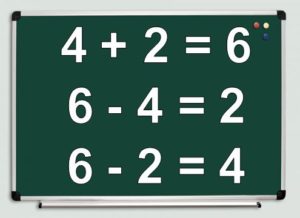Fine art teacher
MBOU Novo-Pavlovsk OOSH
S. Novopavlovka, Kasharsky r-on Rostov region.
Purpose:Acquaintance with clay toys as one of the types of folk art.
Tasks:
Educational:
- develop skills of drawing by presentation,
- fix graphic skills in the image of clay toys on folk motifs,
- to familiarize with the features of ornamental painting of clay toys,
fix the skills of carpal painting in the image of a geometric pattern based on folk motifs.
Developing:
- develop artistic taste and creative abilities of children in the creation of independent decorative compositions,
- to deepen knowledge about folk decorative and applied art on the example of clay toys,
- develop the ability to compare, analyze, highlight the general and different in the objects of decorative and applied art.
Educational:
- create an atmosphere of fascinating aesthetic knowledge of toys from various centers of folk crafts (Dymkovo, Filimonovo, Abashevo);
- to educate students love and interest in folk arts and crafts; careful attitude to the traditions of their people;
- to educate schoolchildren the desire to create beautiful products based on folk clay toys.
Equipment:
- for the teacher: reproductions and photographic materials with samples of folk clay toys; table-schemes of murals of clay toys on paper;
- for students: drawing paper, watercolor paints, brushes, simple pencil, scissors.
Lesson plan
- Organizational moment.
- Goal setting.
- A clay toy as an art form, its history.
- Analysis of the features of clay toys of various centers (Dymkovo, Filimonovo, Abashevo). Shape and color.
- Creating a sketch of your toy on folk motifs (work with a pencil).
- Painting a sketch of a toy in accordance with folk traditions of painting.
- Self-employed students.
- Student exhibition.
- Lesson result.
Class progress
1.Organizational moment.
- Are there all the necessary drawing accessories on the desks?
2. Lesson topic message. Goal setting.
3. The teacher’s story “Clay toy as an art form”. Her story. People's centres”.
A clay toy is a special kind of folk art. It was not always intended only for games, but was most often the subject of decoration of folk life - small household sculpture.
The oldest clay toys on the territory of our country were found by archaeologists among the objects of the second millennium BC. In the Slavic burials of VI-VIII centuries AD, figures of skates and rattles were found.
Several hundred toys of the XIV-XVII centuries were discovered during archaeological excavations in Moscow in Zamoskvorechye and on the territory of the former Pottery Sloboda.
Clay toy in Russia was made from time immemorial almost everywhere where there were deposits of clay and were engaged in pottery.
Men potters made dishes, and women and children sculpted and painted toys.
The most ordinary pets turned into fabulous, fantastic creatures in the hands of masters:
Runner ends.
Breeding cows
Turkey roosters.
And the ladies? Riders? Deer?
Clay toys were the brightest decoration of fairs (at the end of winter-early spring), which hosted a festive folk festival with a mischievous and cheerful name - Whistunya. At this festival, the whistle of clay whistles rang on different voices, and painted clay balls were thrown at each other.
The names of clay toys came from the name of the village or city where they were sculpted.
Over time, the centers of clay toys with their own features of modeling and painting have developed.
Toys of these centers are unique, they can not be confused with each other.
Especially clay toys from Dymkovo (Vyatka region), Filimonovo (Tula region) and Abashevo (Penza region) became known.
(The teacher’s story is accompanied by illustrations of folk clay toys from various centers.)
4. Analysis of the features of clay toys from different centers (form and color).
- Take a close look at clay toys from different parts of our country.
- Name the most common themes that are used by masters in clay toys (human figures: young ladies and riders, skates, deer, sheep).
- Compare the clay toys. What do their plastics have in common and how do they differ?
Dymkovo toy:
The lines of toys are smooth, leisurely, in their outline there are no small and unnecessary details.
Dymkovo toy can not be confused with other stucco clay toys due to its color.
They're the best.
White as sugar, and white bright patterns painted.
Geometric patterns of small circles, ovals, dots, stripes, cells.
Colors: crimson, green, dark blue, orange, yellow.
Philemon's toy:
Fun and elegant.
Through the body and neck are colorful stripes. As well as patterns of crosses, dots, stripes, circles, triangles, Christmas trees. Patterns in the strip.
Abashev toy figures have high elongated necks. Each toy is painted in one color: red, t-green or thick blue. The heads of animals are decorated with beautiful branchy horns, painted with gold or silver paint.
- The tables show possible schemes of painting the main toys.
Large and small circles are large and small "suns";
Direct horizontal lines - the earth;
Wavy lines - water;
The circle is the symbol of the sun;
The square is the symbol of the earth;
Rhombus is a symbol of fertility.
5-6. Creating a sketch of your toys based on folk motives. Painting a sketch of a toy in accordance with folk traditions.
- Now imagine that you are folk craftsmen-toys. And you live in one of the villages: Dymkovo, Abashevo, Filimonovo.
You have to create a contour image of your toy, independently compose a pattern and paint a toy in accordance with folk traditions.
- But before you get to work, remember the basic rule of working with a pencil (the lines are barely noticeable).
- What to remember when working with paints?
7. Self-employed students.
8. Exhibition of students’ works (commentary of the teacher).
9. Taking stock.
- With what centers of folk clay toys I learned in class?
- Can you now distinguish the Dymkov and Abashev toys from each other? On what grounds?
Internet resources used
en.wikipedia.org
rukukla.ru
Dymkovo.com
filimonofskay-igrushka.ru
articles.agronationale.ru
glina.teploruk.ru
{module Google_kvadrat}



